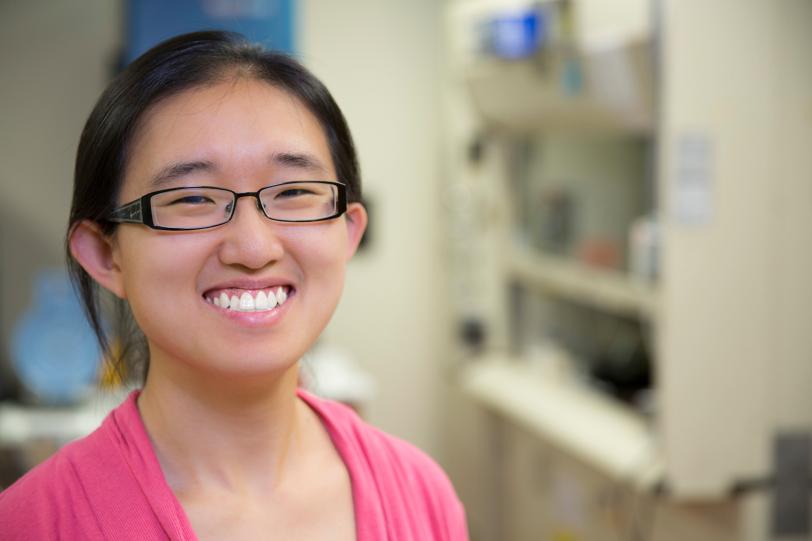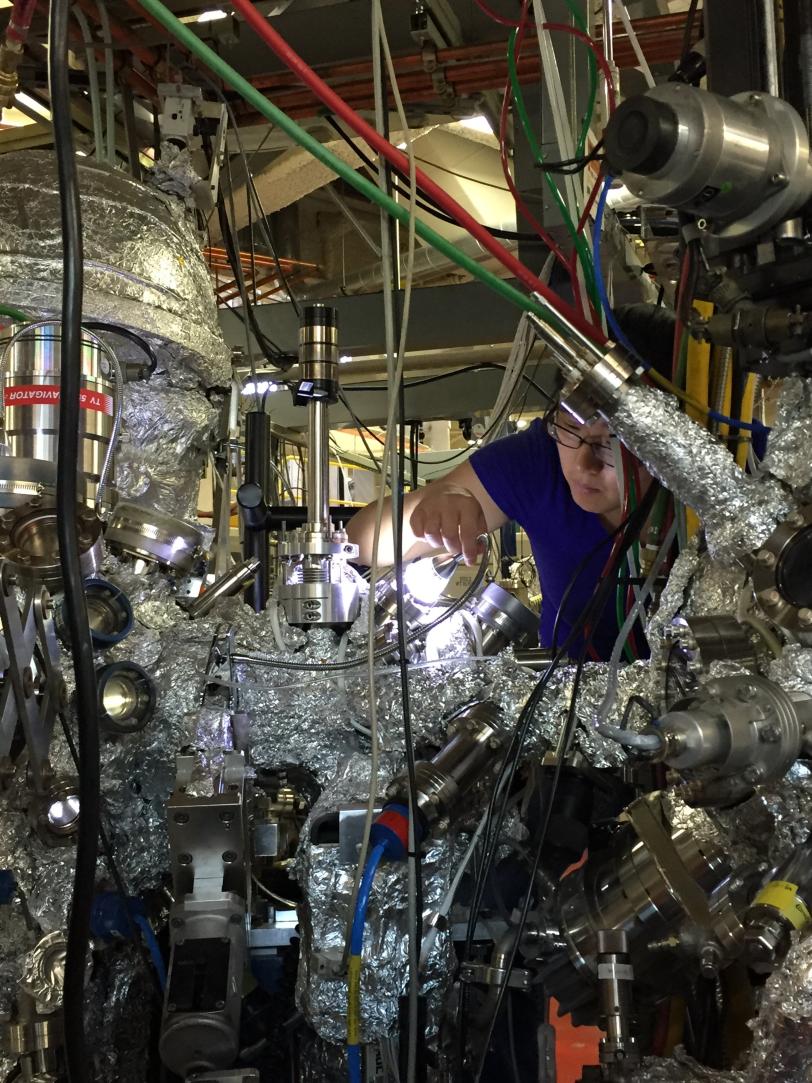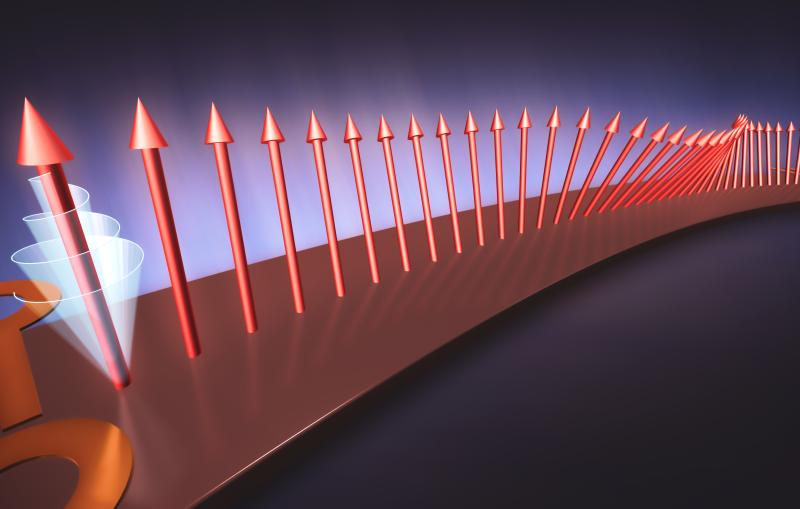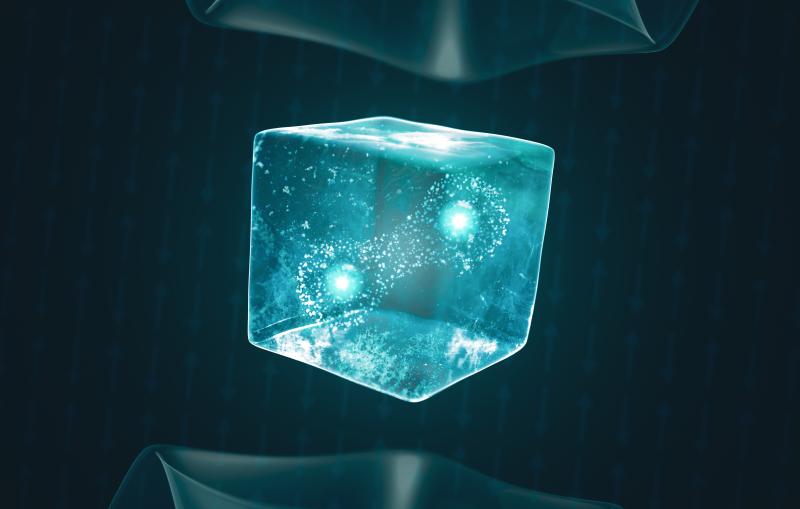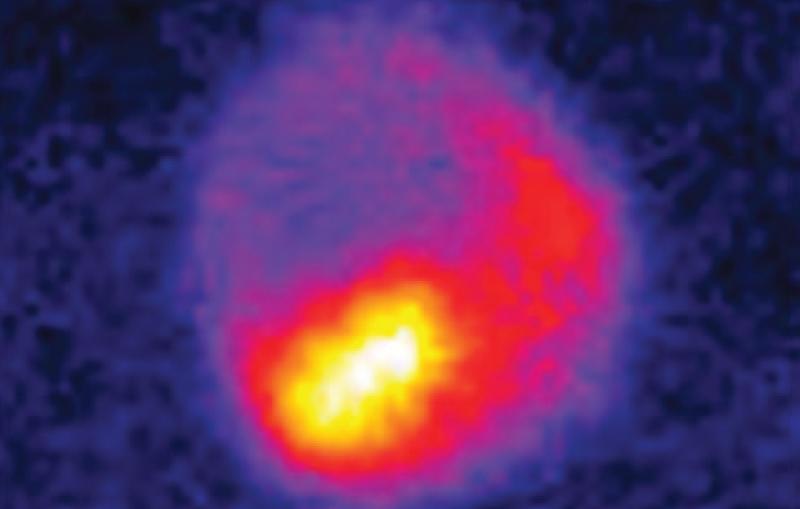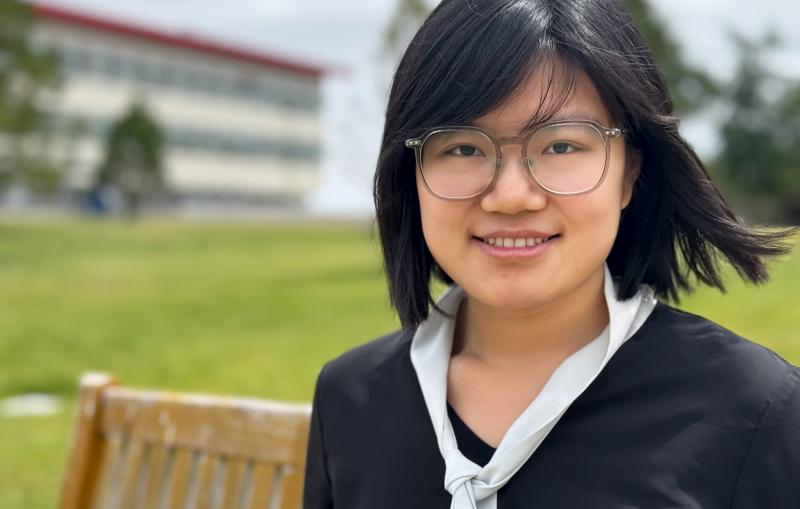Ming Yi Awarded L'Oréal USA For Women in Science Fellowship
Honored as Role Model, Former Stanford Grad Student Did Extensive Research at SLAC
Former Stanford University graduate student Ming Yi has been awarded the $60,000 L’Oréal USA For Women in Science Fellowship, which is given to five U.S.-based women each year as part of an effort to raise awareness of women’s contributions to science and identify exceptional female researchers to serve as role models.
Yi, whose graduate research on novel materials included extensive work at the Department of Energy’s SLAC National Accelerator Laboratory, said she plans to start a support group for moms in STEM fields – science technology, engineering and mathematics – as an outreach activity under the fellowship.
“Before I had my baby last year, the gender imbalance problem did not have as deep an impression on me. I felt that the opportunities available to guys were also available to me,” she said. “When I had my baby, it really hit me that being a mom is a different lifestyle. I feel that for young mothers in STEM this is a critical time period in our lives when we make decisions about how to further our career paths.”
She added, ”I am deeply honored by this award, and am very grateful to all my mentors and colleagues for the generous encouragements along the way, and to L’Oréal for this tremendous support.” The L’Oréal grant will help her buy raw materials and travel to cutting-edge experimental facilities as part of her current work on superconducting materials at the University of California, Berkeley, where she is a postdoctoral researcher.
Yi spent two summers at SLAC as an intern while working on a degree in physics at the Massachusetts Institute of Technology. Initially drawn to particle physics, she grew interested in superconductor research, and in 2008 became a graduate student in the lab of Zhi-Xun Shen, a professor at SLAC and Stanford. She performed her seven years of graduate research within SIMES, the Stanford Institute for Materials and Energy Sciences, which is SLAC’s Materials Science Division.
Superconductors are materials that carry electricity with 100 percent efficiency. "They hold potential to really transform our daily lives with all their amazing applications, like highly efficient power transmission or high-speed maglev trains,” Yi said. But today, even the so-called high-temperature superconductors work only when deeply chilled. Researchers have been trying to create new versions that operate much closer to room temperature.
Yi carried out X-ray experiments on superconducting materials at SLAC’s Stanford Synchrotron Radiation Lightsource (SSRL) and Linac Coherent Light Source X-ray laser, both DOE Office of Science User Facilities, and co-authored a string of important research papers. Recent papers described intriguing commonalities between the two known families of high-temperature superconductors. “We found a potential bridge connecting the two families,” Yi said. “This is an important step toward an eventual understanding of the general phenomenon of high-temperature superconductivity.”
Shen said it became immediately clear when Yi joined his group that she had an exceptional talent for science. “She has extraordinary drive and motivation, and she is able to take a problem and run with it in a very sophisticated way,” he said. “The data is always meticulously taken and very carefully analyzed, so when she tells you something you know you can trust that it’s right.
“She’s also very productive and very mature in her interactions with people – and always very generous,” Shen added. “I would put her to work with younger students. She was good at mentoring them and recruiting them, too.”
SLAC senior staff scientist Donghui Lu, who worked closely with Yi on experiments at SSRL and other facilities, said he was struck by her persistence and creativity. For instance, when she heard that another group had gotten interesting results by squeezing the materials they were testing, she asked if her team could do the same – and kept on asking, even though he thought it would be too difficult to do this with their particular testing method. But she persisted, he finally gave in, and over a period of months they overcame the difficulties. “We got beautiful data,” Lu said, “and this later became a routine type of experiment we do at our SSRL beamline.”
Born in China, Yi came to the United States with her family at the age of 12. Her father is an atmospheric scientist at City University of New York and her mother is a computer programmer. She said her father was a major influence in stoking her interest in science. He was always asking her questions – why did she think the sky was blue? – and bought her books about what great scientists did when they were kids.
"Even in high school I liked physics more than the other sciences,” Yi said. “I like its elegance. There is not so much memorization – the beauty of the universe is all written in a few equations.”
At UC-Berkeley she works in the lab of former Chancellor Robert Birgeneau, where she is learning new techniques for investigating superconductors and also learning how to synthesize these materials herself.
"Ming has moved seamlessly from Z-X Shen’s lab at Stanford to mine at Berkeley,” Birgeneau said. “She has already carried out several important experiments on the new iron chalcogenide superconductors. Not only is she an outstanding experimental physicist herself, but she is also able to collaborate extremely well with other scientists, both junior and senior. She is most deserving of this recognition by L’Oréal."
The L’Oréal For Women in Science program recognizes and rewards women scientists around the world, and has awarded grants to more than 2,250 scientists in more than 110 countries since its start in 1998. Candidates for the 2015 U.S. fellowships were evaluated on the basis of intellectual merit, research potential, scientific excellence and their commitment to supporting women and girls in science. The application process was managed through a partnership with the American Association for the Advancement of Science (AAAS).
For questions or comments, contact the SLAC Office of Communications at communications@slac.stanford.edu.
SLAC is a multi-program laboratory exploring frontier questions in photon science, astrophysics, particle physics and accelerator research. Located in Menlo Park, Calif., SLAC is operated by Stanford University for the U.S. Department of Energy's Office of Science.
SLAC National Accelerator Laboratory is supported by the Office of Science of the U.S. Department of Energy. The Office of Science is the single largest supporter of basic research in the physical sciences in the United States, and is working to address some of the most pressing challenges of our time. For more information, please visit science.energy.gov.
